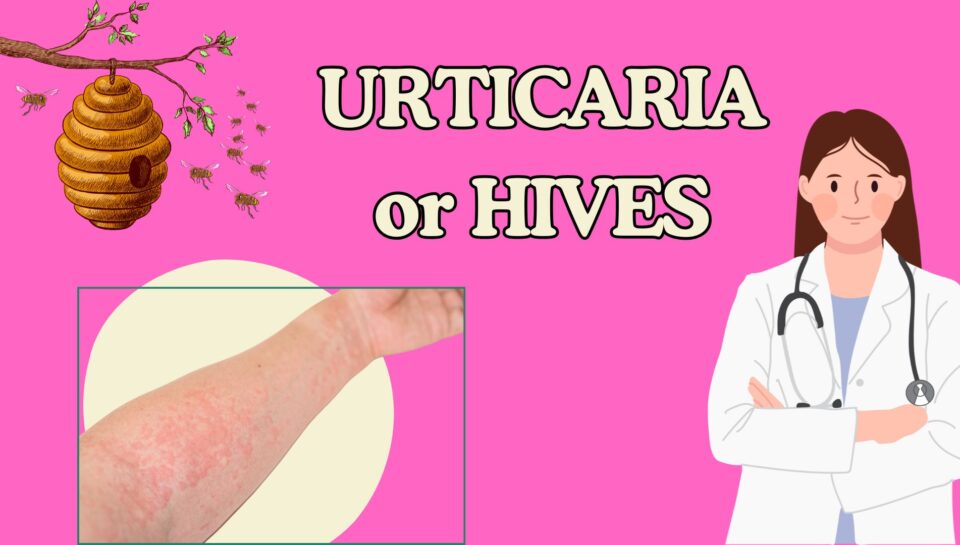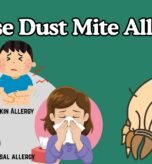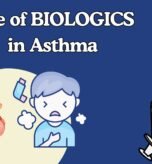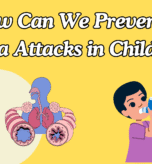Hives: What is Urticaria?
Hives are an allergic rash that can appear on the skin. These usually appear suddenly, are raised, red, itchy bumps that can vary in size. Hives are usually accompanied with reddish hue on the skin called wheals. Hives can affect children of all age groups and usually disappear on their own after a few hours or maybe days.
URTICARIA is a type of allergic condition of the skin. Itchy, raised bumps (hives) with redness (wheals) develop over a part or whole body.
What does an Urticaria rash look like?
Urticaria is an allergic condition in which the histamine levels rise and affect different parts of the skin. The onset is sudden and unpredictable. It can affect children with allergic tendencies more often. The rash appears on any part of the skin and starts with redness that progress to swellings or bumps that are usually itchy and warm to touch. Some children complain of feeling hot in that area.
What causes Urticaria?
Urticaria is an immune reaction to any substance that is considered foreign by the body. Most commonly in children, urticaria is caused by viral infections and it subsides on its own. Children with allergies to certain foods like shell fish, crabs, nuts, drug allergy, latex allergy can have urticaria. Urticaria can be triggered in some individuals by sun exposure or extreme cold, mosquito bites or insect bites, exercise, or even stress.
How can I know what causes urticaria in my child?
If your child develops a rash within 10-15 minutes of consuming a food item or any medicine and it is very evident that the rash was caused by that particular exposure, then that can be the triggering agent your child is allergic to. In case of drug allergy, drug challenge test can be done in the hospital setting under supervision.
Allergy testing is generally not recommended in urticaria skin rash.
Skin prick tests can be done to check for allergies however, allergy testing is generally not recommended in urticaria skin rash. This is because urticaria is an autoimmune response of the body and usually the allergen is within the body. Most allergy tests are negative in children with urticaria.
What do I do if my child has urticaria?
Acute Urticaria rash are usually harmless and subside on their own after few hours or sometimes days. Coolants like Calamine or Aloe-vera gel can be used to soothe the skin and anti-histamines are prescribed to relieve itching in acute urticaria.
Recurrent urticaria is however a cause of concern as it can lead to poor quality of life and hinder routine life of the child. If a child has urticaria for lasting for more than 6 weeks , he is said to have chronic urticaria. These children need evaluation by a allergy specialist and require long courses of antihitamines.
Urticaria by itself is a mild self-limiting condition but it can sometimes be associated with generalized body swelling (angioedema) or severe life threatening allergic reaction (anaphylaxis).
How do we treat chronic urticaria?
Urticaria that lasts for more than 6 weeks or recurrent episodes of urticaria for a year are classified as chronic urticaria. Antihistaminic medicines are the treatment of choice in these children.
Children with Chronic Urticaria are given long courses of anti-histamine drugs to achieve a symptom free period of minimum 6 months after which these drugs are gradually tapered
The dose of antihistamine is decided by an allergy specialist after complete evaluation. Anti-histaminic drugs are continued for around 6-8 months and then gradually tapered off if the child is symptom free.
If the child has poor response to high dose anti-histamines, biologicals like Omalizumab are given as second choice. Immunosuppresive drugs may be required in children with severe disease that is difficult to control.
These children need to be on a regular follow up with their doctor for proper monitoring and to keep the urticaria controlled.




